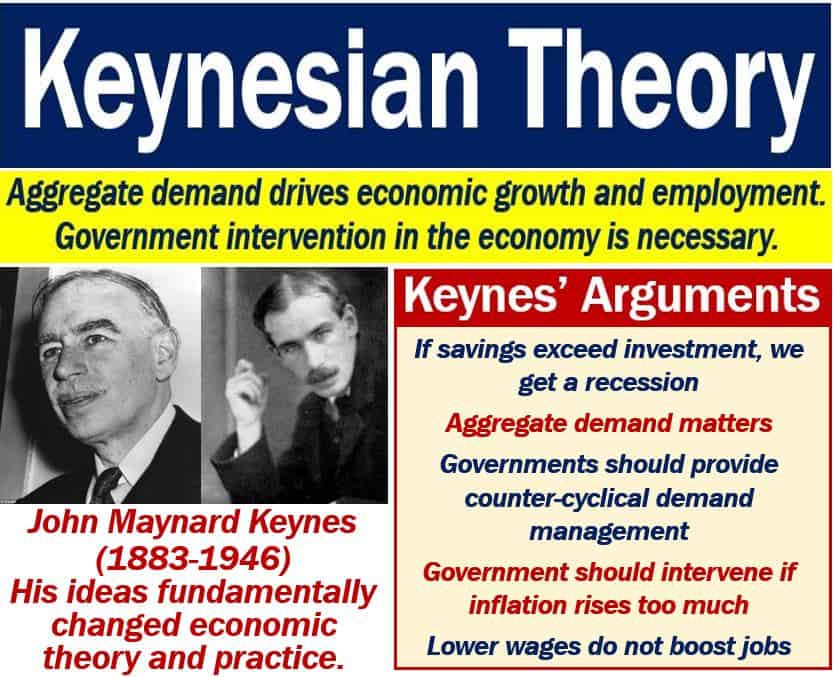Keynesian Theory suggests that for an economy to expand and be stable, the government needs to intervene actively. This is especially important during a recession or depression.
John Maynard Keynes (1883-1946), a British economist, put forward this theory, hence the name. Keynesian Theory is a product of the Great Depression. Keynes believed that expenditure was the key to economic stimulation.
By expenditure, Keynes meant how much an economy spends on products and services.
Keynesian Theory forms part of what economists call Keynesian Economics.
Regarding Keynesian Theory, the International Monetary Fund (IMF) makes the following comment:
“The main plank of Keynes’s theory, which has come to bear his name, is the assertion that aggregate demand – measured as the sum of spending by households, businesses, and the government – is the most important driving force in an economy.”

Keynesian Theory – Great Depression
The central tenet of Keynes’ theory is that government intervention can stabilize the economy.
During the Great Depression, economists could not explain the cause of the severe global economic collapse. Neither could they provide an adequate solution to kick-start production, economic growth, and employment.
The Great Depression took place mostly in the 1930s. It was a severe global economic depression that originated in the United States. It lasted from 1929 to about 1941, with some variations in time between countries.
In fact, it was the longest, deepest, and most widespread depression in modern history.
Keynes spearheaded an economic thinking revolution that turned the prevailing theory on its head. Until the Great Depression, economists believed that free markets could automatically provide full employment.
Put simply; anybody who wanted to could work if workers’ wage demands were flexible and the market was free.
Keynes, with his Keynesian Theory, asserted that aggregate demand was the economy’s most important driving force. Aggregate demand consists of the sum of spending by businesses, households, and the government.
Keynesian Theory also asserts that the free market does not have self-balancing mechanisms that lead to full employment.
Keynes and his followers justify government intervention through public policies. These public policies aim to achieve full employment and price stability.
The United States enacted a series of federal programs and public works project during the great depression. President Franklin D. Roosevelt called them The New Deal.
Keynesian Theory still popular today
Since the Great Depression, the US and most of the rest of the world have adopted Keynesian economic theory.
Keynesian Theory today forms part of every advanced economy’s strategy to combat recessions.
After the Great Recession that began in 2007/8, central banks globally have injected trillions of dollars into their economies.
Even politicians who call themselves conservative fiscal hawks, invariably intervene if there is a recession when they are in power. In fact, they go even further and use taxpayers’ money to prop up collapsing banks.
